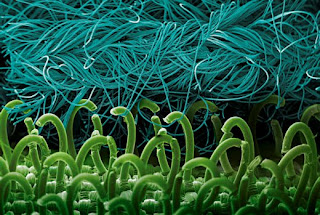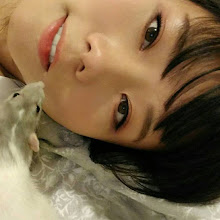Although I don’t regret the choice I made back then, I was very shocked to see and listen to this week’s lecture about Tokujin Yoshioka’s presentation named ‘Second Nature’. His works was completely against my idea of ‘industrial design’ – his works in the show could not be mass-produced, wasn’t functionalistic or looked like familiar. I looked up for more information after the class, and found out that his exhibitions were more like sculpture gallery. In fact it maybe wrong to call him an industrial designer; his works range widely from an object for everyday use to interior design.
Tokujin’s one of the most famous works seems to be Honey-Pop chair, seeing how many famous museums decided to put it in their permanent collections; however the Second Nature was the one which moved me the most. I liked the fact that Tokujin wasn’t only trying to represent nature in his pieces, but to show the growth, movement and elements of the nature itself. ‘Venus Crystal Chair’ is a good example to understand the theme of this exhibition. Tokujin didn’t carve or put together to make this chair. He dipped in the skeleton of a chair into chemically treated liquid, and chemical reaction that occurs on the surface of skeleton would cause crystallization – which will continue to grow until it is removed from the liquid.
I was fascinated by Tokujin’s works even by looking at his website, but I couldn’t help but to think that these seemed like ideas and designs you can only encounter in specific exhibitions. However I was surprised to find out that Tokujin had recently designed for Swarovski’s flagship store in Ginza, Tokyo. It is also obvious that his design was derived from the Second Nature exhibition. It seems like the ‘Clouds’ was the origin of the entrance and ‘crystal forest’, and ‘Venus Crystal Chair’ being the origin of ‘shooting star’. I’m positive that I’m not the only one who thought that Swarovski had made an amazing job selecting their designer. Also seeing Tokujin’s successful designs had made me realize that I’ve had a strange notion about industrial design that it is a field where you need to design new, futuristic cell phone or cars. In fact I think that I didn’t have to be so worried when I chose my major in early 2008; for some designers, everything was just same kind of creation – presented in different formats. I don’t understand why I was thinking so limitedly before, but Tokujin helped me to break away from that idea.

Crystal Forest

Shooting Star


















